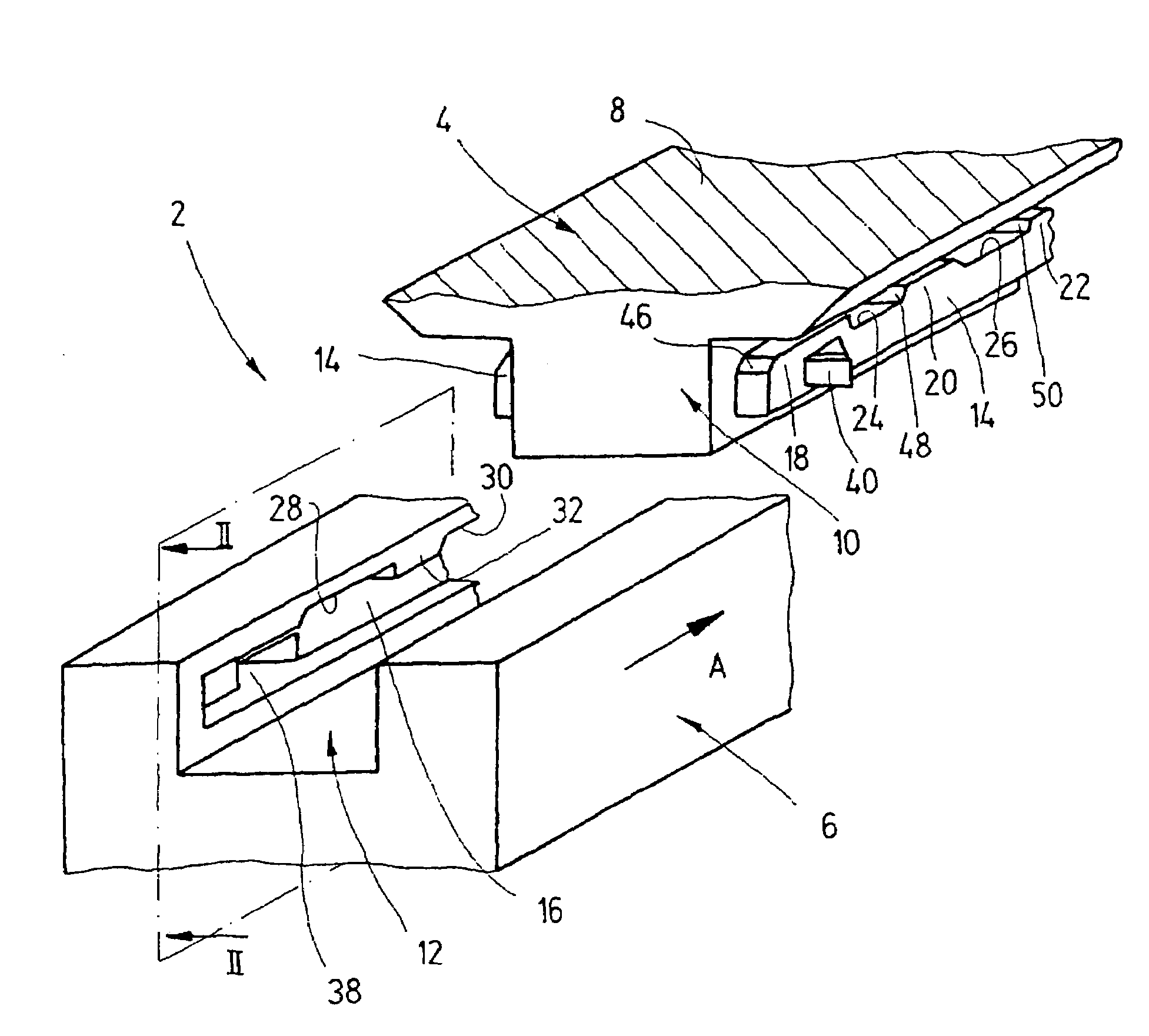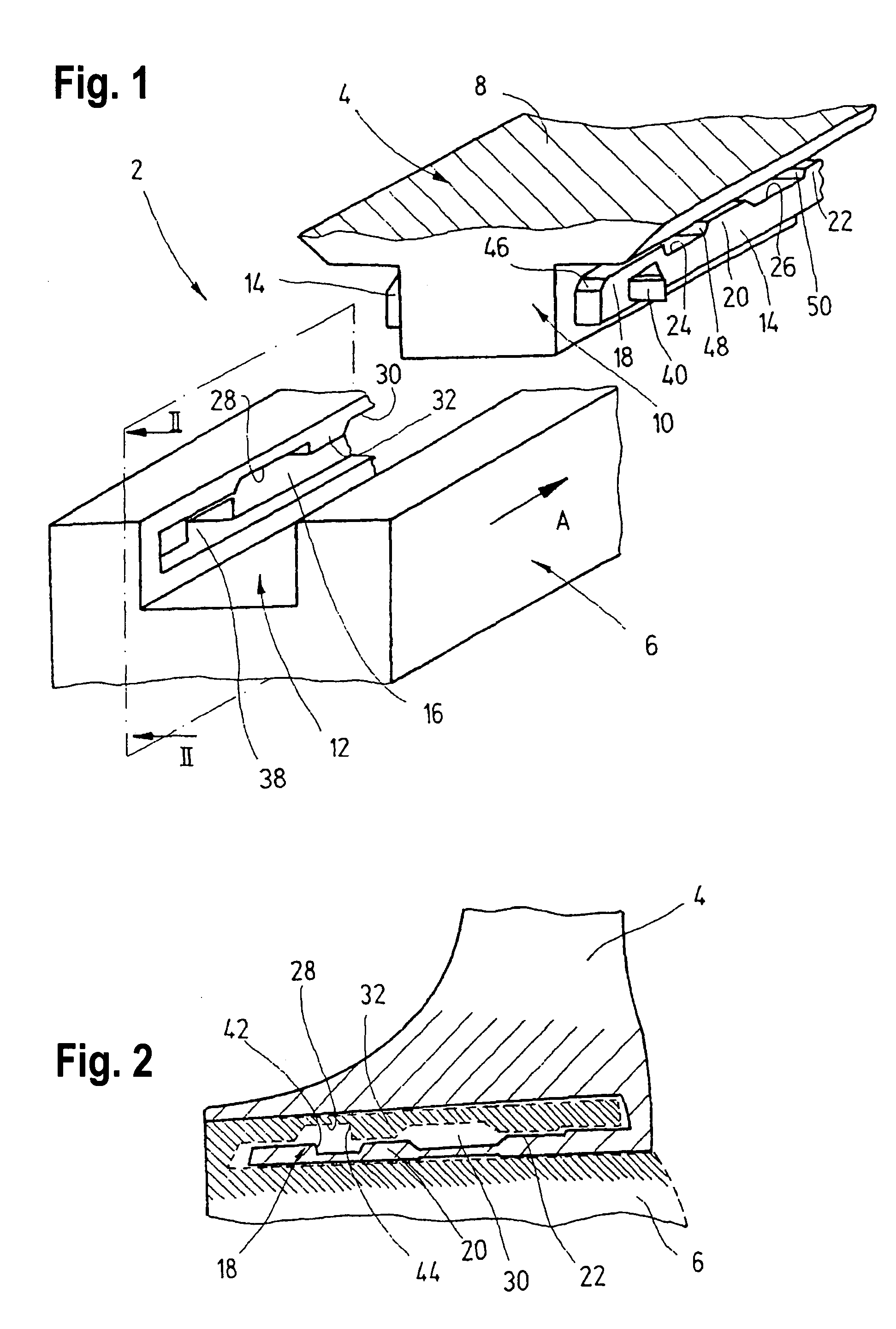Device for locking an electrical device to an accessory part
a technology for locking electrical devices and accessories, which is applied in the direction of rod connections, cell components, couplings, etc., can solve the problems of property damage or injury, and the two-stage locking mechanism is unable to reliably prevent the battery pack from falling ou
- Summary
- Abstract
- Description
- Claims
- Application Information
AI Technical Summary
Benefits of technology
Problems solved by technology
Method used
Image
Examples
Embodiment Construction
[0027]The locking devices 2 shown in the drawings are used to lock a cordless power tool 4, for example a hand-guided percussion drill, to a battery pack 6 required to supply power to the power tool 4.
[0028]As best shown in FIGS. 1 through 5, on the free lower end of its handle 8, the power tool 4 is provided in a known fashion with a protruding guide rail 10 that can be slid in the direction of the arrow A into a guide groove 12 let into the upper end of the battery pack 6. This guide groove 12 has a cross section complementary to the cross section of the guide rail 10 and, together with it, constitutes a linear guide that defines the predetermined insertion direction (arrow A).
[0029]The guide rail 10 is provided with two laterally protruding guide strips 14, whose cross sections essentially correspond to the cross sections of two guide slots 16 (only one of which is visible in FIG. 1) situated opposite from each other inside the guide groove 12. The tops of the two guide strips 14...
PUM
| Property | Measurement | Unit |
|---|---|---|
| force | aaaaa | aaaaa |
| weight | aaaaa | aaaaa |
| movement | aaaaa | aaaaa |
Abstract
Description
Claims
Application Information
 Login to View More
Login to View More - R&D
- Intellectual Property
- Life Sciences
- Materials
- Tech Scout
- Unparalleled Data Quality
- Higher Quality Content
- 60% Fewer Hallucinations
Browse by: Latest US Patents, China's latest patents, Technical Efficacy Thesaurus, Application Domain, Technology Topic, Popular Technical Reports.
© 2025 PatSnap. All rights reserved.Legal|Privacy policy|Modern Slavery Act Transparency Statement|Sitemap|About US| Contact US: help@patsnap.com



